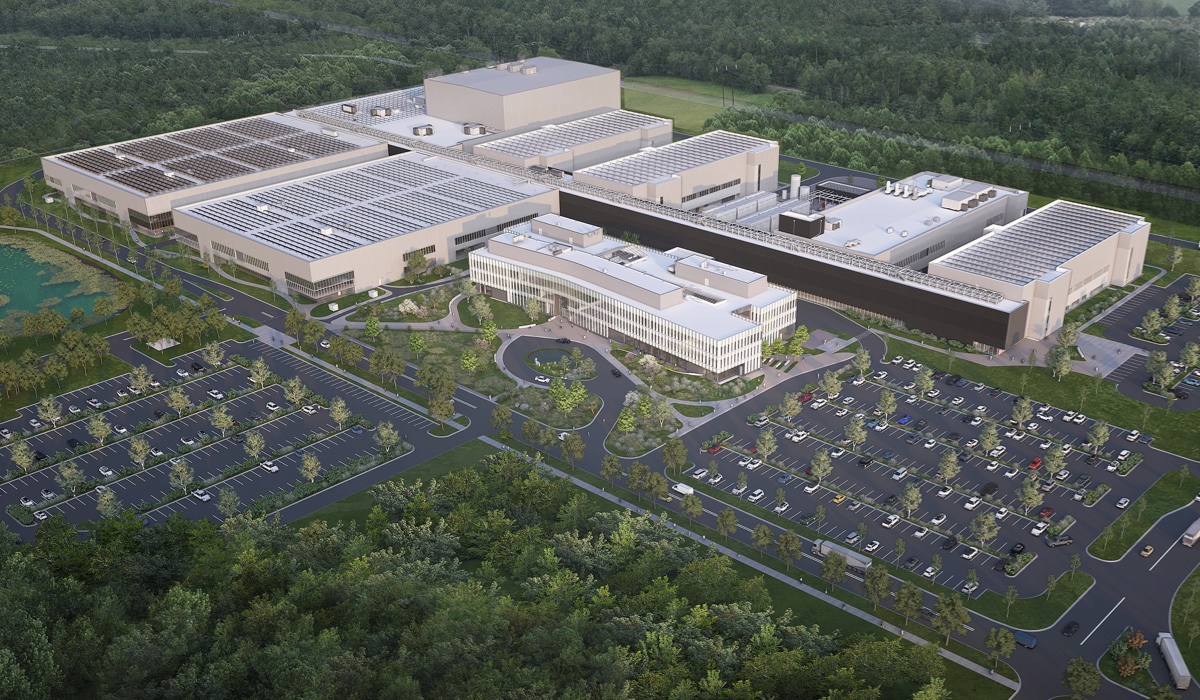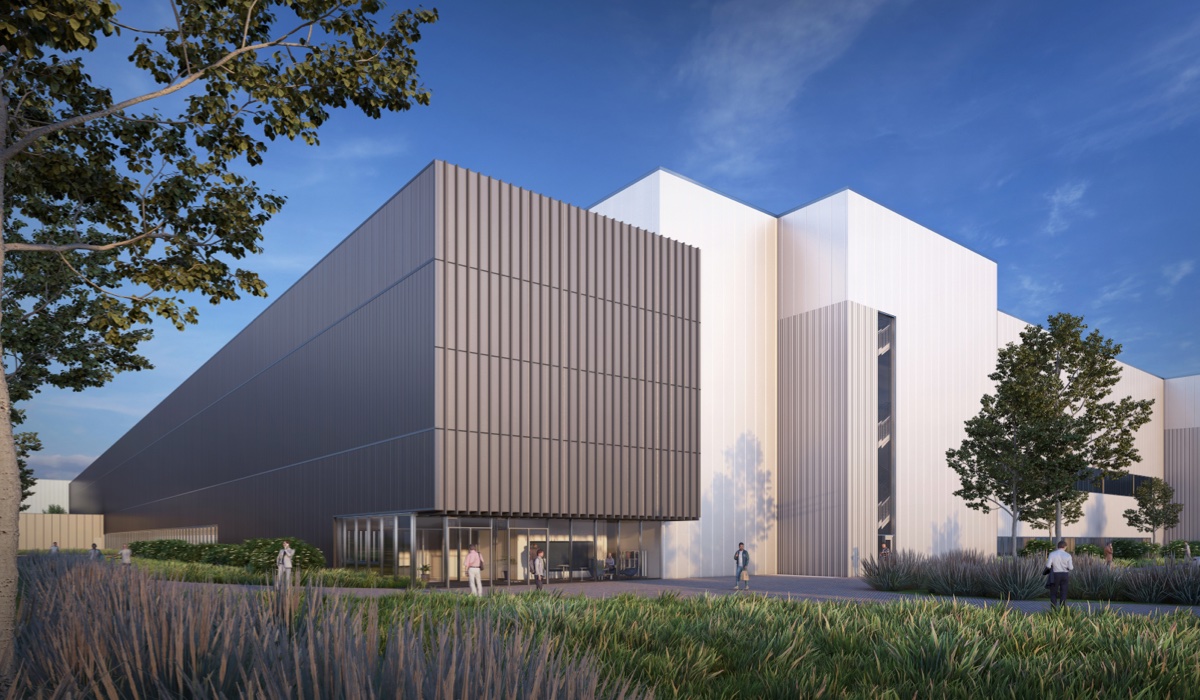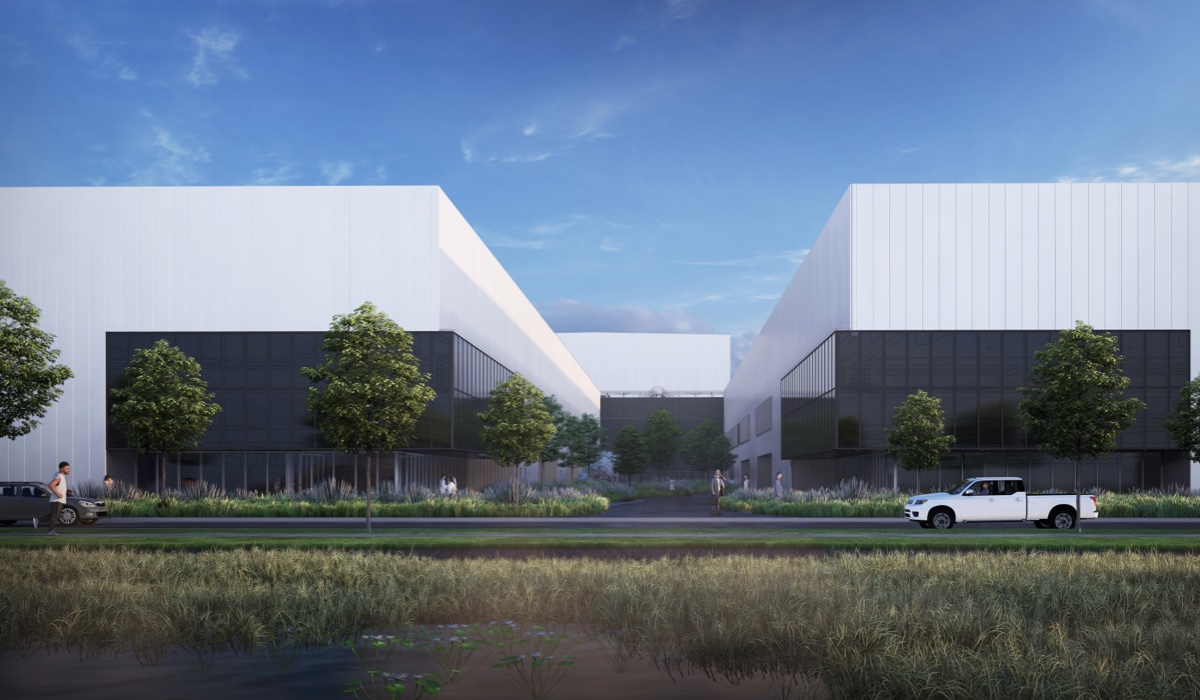Aeos™ Grade 65 High-Strength Structural Steel: More Strength, Reduced Weight
After the team analyzed the numbers, ASTM A913 Grade 65 steel emerged as the clear solution for reducing tonnage while maintaining structural integrity.
Nucor’s steel products are manufactured from recycled scrap in an electric arc furnace (EAF), making it one of the lowest embodied carbon steels of its kind. Additionally, Aeos™ ASTM A913 is produced domestically at Nucor-Yamato Steel Company in Arkansas, ensuring it is readily available for shipping in bundles to the job site on a regular rolling schedule.
“It's becoming a no-brainer to use Grade 65 steel for columns in most larger buildings, because not only is it more sustainable, but it just uses less steel for the same strength,” noted Rob Johel of SteelFab. “You are able to reduce the total weight of the steel needed, so there can be a cost savings to use it.”
Jeff Hall of BE&K explained, “These are heavy steel frame buildings, so we used Grade 65 for all the large members [like columns and trusses], and it contributed to helping us meet our low-embodied carbon target.”
How Grade 65 Reduced Project Tonnage and Embodied Carbon:
- The tonnage of 65 ksi used for the Novo Nordisk project was approximately 1,950 tons.
- Overall, using Aeos ASTM A913 Grade 65 saved approximately 400 tons of material compared to what would have been required for traditional 50 ksi sections, which equates to a 17% weight savings.
- When applying the tonnage savings to embodied carbon, the team saved over 840,000 kg of CO2 (32%) compared to the industry average for 50 ksi material.
“It’s a big deal for Novo Nordisk. We’re proud of this facility, and our embodied carbon numbers are amazing,” Larry Lane of Novo Nordisk said of the outcome. “We had a very aggressive goal, which I'll be honest, I wasn't sure we would be able to meet, and the steel played a big role in that. We have other projects moving worldwide, and our numbers are the best in the entire group, which is impressive. The return on value for this steel is clear.” Due to the success of this project, Novo Nordisk plans to utilize high-strength structural steel in future development to meet reduced carbon targets.
Benefits of Aeos ASTM A913 Grade 65 Steel:
- Cost savings: Using high-strength structural steel reduces the material required, thereby reducing overall costs and embodied carbon.
- Sustainability: Nucor utilizes a sustainable, circular steelmaking process using EAF technology to create low-embodied carbon steel
- As North America’s only domestically produced A913 steel, Aeos Grade 65 is readily available domestically even for the most complex structures
Discover these benefits and more for Aeos ASTM A913.
Circularity and the Future of Steel
At the time of publication, the Novo Nordisk project is significantly below their 12.0 CO2 C4Z target, coming in around 9.2 kg CO2/sm/year over 50 years. This value includes on-site renewable energy and reflects life cycle stages A1-A3, B4, B6 (operational energy) and C3-C4. C4Z is a business sustainability strategy that focuses on three areas: circular company, circular supply and circular products. The goal is to promote a circular mindset by utilizing renewable energy and collaborating with suppliers who proactively implement circular sourcing and procurement. For this fill-finish campus expansion, prioritizing circularity involved a focused approach to implementing the most sustainable solutions possible, from sourcing materials to reclaiming stormwater and using electric boilers within the building.
One of the most unique aspects of the project is that Novo Nordisk considered circularity from start to finish, including the end-of-life use of the building.
The project was designed and constructed with future reuse and adaptability in mind. “Novo Nordisk looks at it from a reconfiguration and recycling standpoint,” explained Robert Stevenson, PE, Principal, Regional VP, Life Sciences Market Sector Leader of Bennett & Pless. “The building is designed for disassembly. Everything is fully bolted with minimal welding. The idea is, at the end of its useful life, it's easier and more efficient to reuse the materials — it's ready to go.”
This circularity mindset permeated every detail of the project, and the project partners agreed that they have been seeing a shift towards companies prioritizing environmental stewardship. As technology advances, project owners are evaluating both the embodied carbon aspects of the built environment along with operational carbon, including future needs for heating, cooling and other facility efficiencies.
“I've been involved with a lot of projects, but none that have had the commitment to sustainability that Novo Nordisk has,” mentioned Larry Lane. “Is it good for the bottom line? Absolutely. But it's good for the environment, and it's good for the industry as well.”
Nucor has been dedicated to supporting a more circular economy for over 50 years through our circular, EAF steelmaking process that prioritizes minimizing waste, maximizing recycled content and lowering embodied carbon to meet the industry’s stringent sustainability project requirements.
Nucor’s corporate initiatives include 2050 net-zero steelmaking goals. Learn more about our commitment to sustainability.



